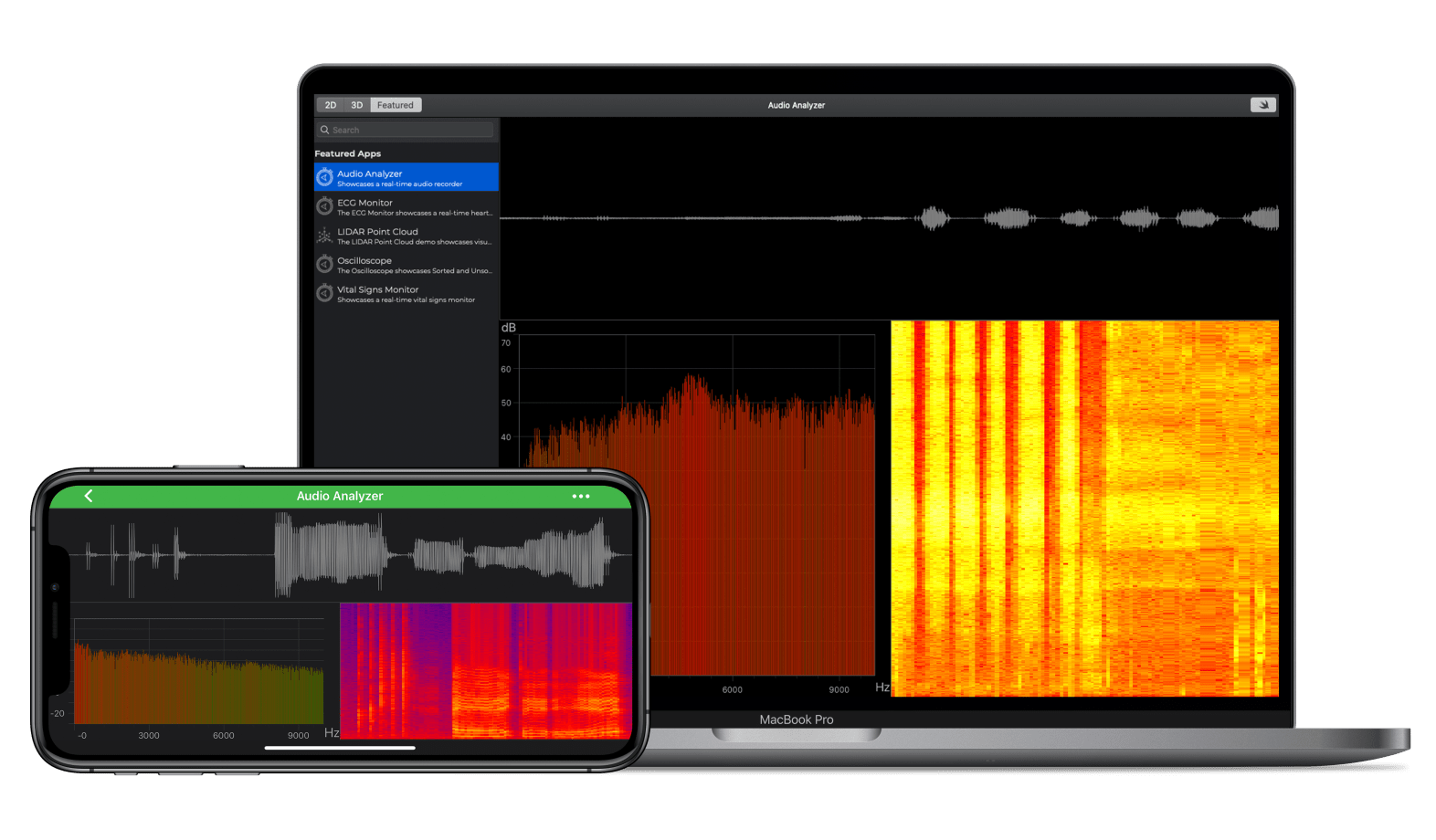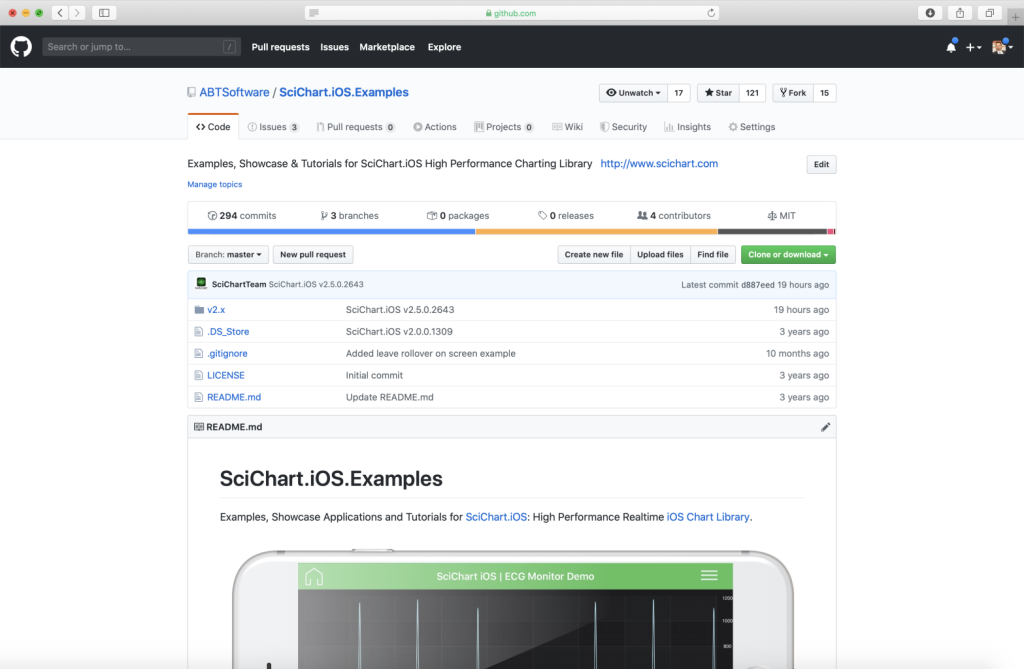iOS & macOS charts - Examples
Please note! These examples are new to SciChart iOS v4 release! SciChart’s OpenGL ES and Metal iOS and Metal macOS Chart library ships with hundred of Objective-C and Swift iOS & macOS Chart Examples which you can browse, play with and view the source-code. All of this is possible with the new and improved SciChart iOS Examples Suite and demo application for Mac, which ships as part of the SciChart SDK.
The Audio analyzer demo showcases how to use SciChart iOS charts in a scientific context.
Download the examples and enable your microphone to see this demo at work.
In this example we listen to the microphone on your iPad/iPhone device and create a waveform of the sound recorded in the top chart. This chart has data-points drawn in real-time on our High Performance charts. The example application then performs a Fourier Transform, creating a spectral / frequency analysis of the audio waveform and plots in the lower left chart. Finally, the histogram of the fourier transform, known as a spectrogram, is plotted in a SciChart iOS Heatmap control in the bottom right of the example.
If you are creating an app that needs to visualize scientific data from data-acquisition devices, audio spectra, or visualize radio frequency or spectral analysis choose SciChart to shortcut your development time & get to market faster with our well-tested, reliable iOS Chart library.
The Swift and Objective-C source code for the iOS and macOS Audio, Radio frequency & Spectrum Analyzer Example example is included below (Scroll down!).
Did you know that we have the source code for all our example available for free on Github?
Clone the SciChart.iOS.Examples from Github.
Also the SciChart iOS and Scichart macOS Trials contain the full source for the examples (link below).


